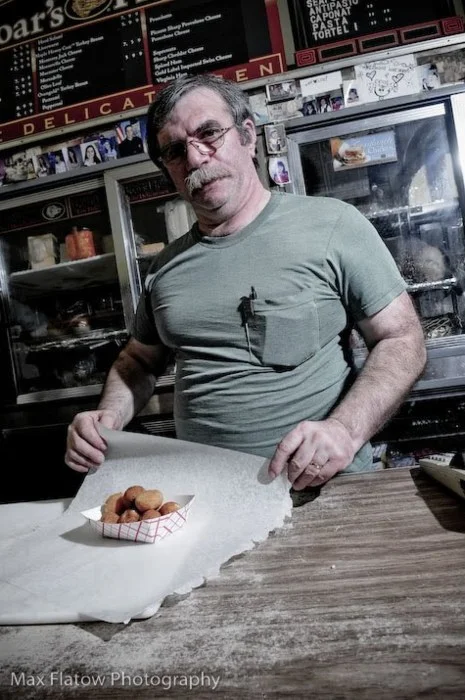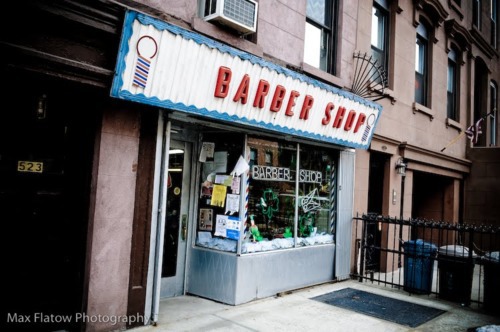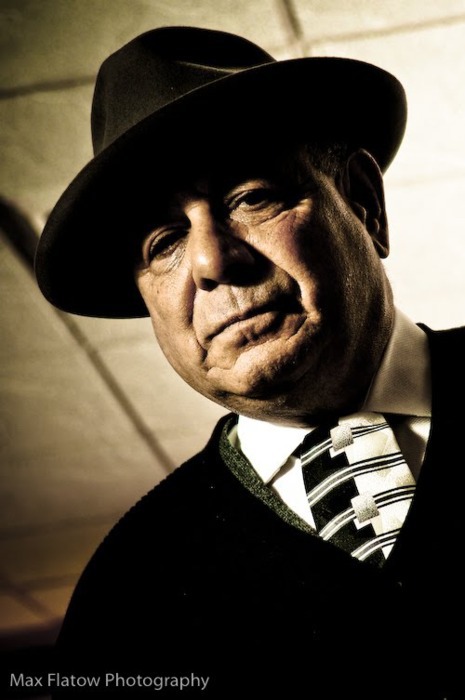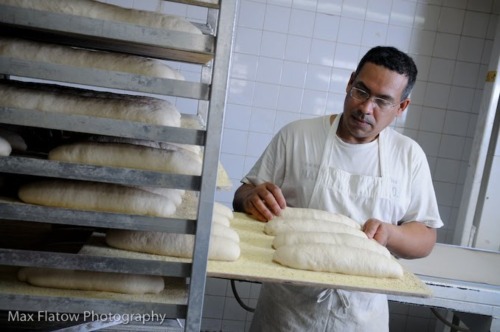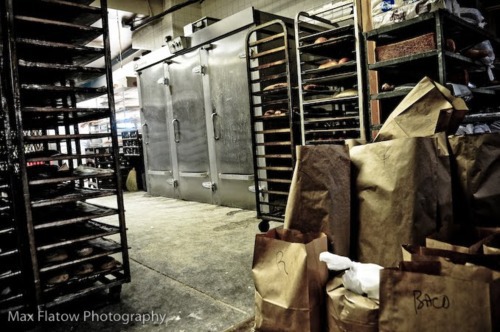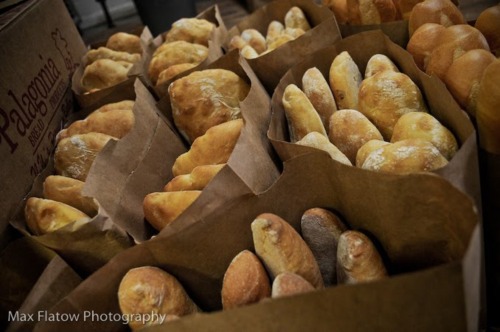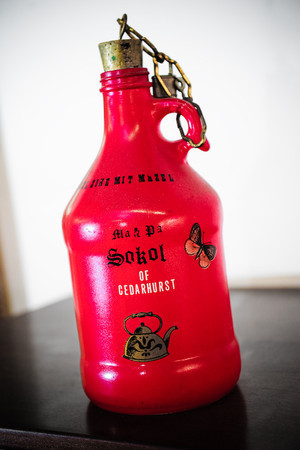Marietta
I’ll be the first to admit that I love new things - new books, “New Morning” by Bob Dylan, new bed sheets, new Jersey Shore episodes, new attachments for my Kitchen-Aid, all news that is breaking.
But what’s the new without the old?
As of 2011, Carroll Gardens can still boast one more old-timey business: Marietta. Nestled between the Chase Bank on the corner of Court and Carroll streets, and the Italian restaurant Fragole, Marietta just may be our oldest clothing shop.
You wouldn’t be able to recreate a store like this if you tried. Film crews have been approaching Marietta for years because it dons that perfectly demoded look: antiquated blue and white cursive sign, behind-the-times display window of undergarments littered with words like “Special!” and “Value!” and inside, a muumuu rack fit for an Italian grandmother queen.
The store is small. Most of the merchandise is packed in boxes, its contents and sizes written out in sharpie marker.
Gloves: $1. Hat sale: $2.50. Panties: $5/pack of 3.
Does the idea of Marietta servicing the Carroll Gardens of today make me giggle? A little bit. That said, if I could put the store up on a pedestal, I would.
Behind these old doors, affable brothers Joe and Matty Chirico are running the show.
Joe, 89, is quiet. Matty, 83, is not. Joe sweeps while Matty chats.
***
Marietta was Joe and Matty’s mother. A reputable clothing peddler who earned enough money to open up her own store at 371 Court St. (now Happy Pants Café) in the spring of 1940. Ten years later, when the rent was raised from $57 to $60 a month, Marietta and her husband, Dominic, made the decision to purchase the building across the street.
A smart move that both Joe and Matty will never forget.
But the brothers are blunt.
“There was never big business. She stood, she existed, she had to struggle to keep going. It’s been the same for us. We’re lucky to have the building,” Matty admits.
Both Joe and Matty served at the tail end of the Second World War. Joe went into the Marines in 1941 and when he got out four years later, Matty went into the Coast Guard. He was home a year later, when the war was over, in time to join Joe in the search for steady work. No such luck.
Matty remembers the details.
“Our mother turned to us and said ‘You two wanna try running the store?’”
Matty’s grandson, Matt, 20, a college student who’s been working part-time at the store for the last five years, pipes in.
“You’re still trying!”
Matty gets a kick out of that line.
“My grandson! He always says that.”
I ask Matt if he’s going to take over the store, but he doesn’t know. He has an older brother who has already passed on the offer.
“If they want it, they can have it,” Matty says. “My older grandson is a fireman in Chinatown. He said to me once: ‘Grandpa, you’re still working? You’re 83. At 43, I can retire.’”
Pause. A punchline awaits. I can tell.
“‘If you live that long, I say to him!”
There it is.
“True story,” he adds.
A woman is in the store. She pays for socks. She leaves.
“What do you wish you sold more of?” I ask.
“Oh, I don’t know, men’s jeans,” Matty says. “Did you know that people used to come in with five, six, seven kids and dress their entire family here? Now they come in with two, one, even no kids! And they go ‘just give me this for me, or my husband, or my friend.’ Kids, less and less. They’re fussy. They want to design their own clothes. We don’t do that.”
Joe hasn’t said much, but all of a sudden his hand comes down hard on the counter. Fly. Killed it.
Matty keeps going.
“My wife died five years ago. We were married fifty-five years. I said ‘I got nothing to work for anymore, my kids are grown, I quit.’ I went home for two weeks. And then I came back. I wanted to be here. Be active. I said ‘I can’t quit.’”
Before I can respond, the subject changes.
“You know where we used to go as kids? The Red Hook pool. Is the pool still there?”
My answer is irrelevant.
“We used to go there! We’d hop the wall at night. You don’t pay and nobody bothers you. The cops were good in those days. They didn’t yell at you. ‘Whaddya guys doing here? Pool’s closed!’ they’d say. ‘Alright, we’re leaving, we’re leaving…’ we’d say. And then they’d leave, and we’d go back up the steps, over the wall. They knew we weren’t trouble.”
The subject changes again.
“You’re from the neighborhood,” he says. “You remember the trolley cars on Court Street?”
I laugh out loud. “Matty, I was born in ‘81.”
He smiles like it was a joke he’s been waiting to tell since I walked in.
“Oh, I forgot,” he said. “We used to hitch on them!”
“You were bad!” I mock.
“That’s not bad! You know what bad is? Dope addicts. Guys that mug people. No, that was fun! I’m telling you, we didn’t have money and the cops knew it. They knew kids didn’t have five cents to take a trolley car. They’d say ‘Be careful!’ They knew you didn’t have the money.”
Matty asks Joe if he remembers when candy stores sold penny candy. Joe is still sweeping, but stops to let out a little guffaw.
“A penny!” he says. “Now when you get a penny, you throw it out.”
***
A new thing for you to do this year: Stop in at Marietta. Engage the Chirico brothers. Listen to the stories.
They’ll be glad to see you.




